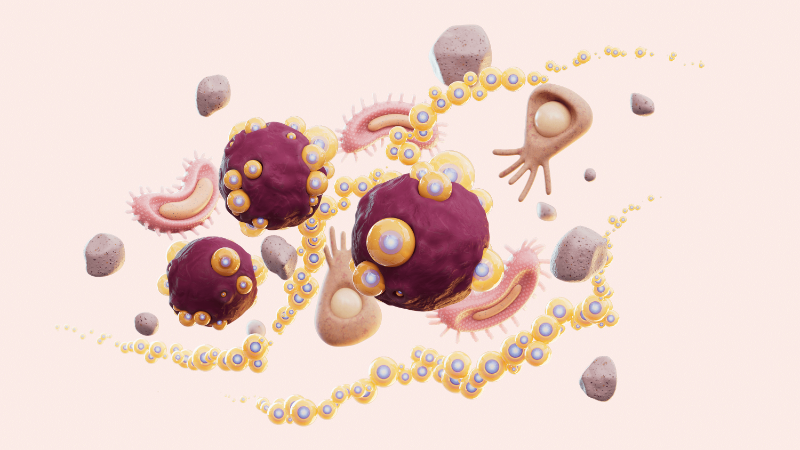Cutting-edge research from Basel
Better cancer therapies
Certain immune cells can attack tumours – but cells derived from donor blood can pose a risk to recipients. Now, a group of researchers led by ETH professor Sai Reddy has managed to modify the immune cells of donor blood to make them safe to administer. This could improve cancer patients’ chances of recovery. The aim is to create a standardised, user-friendly commercial product to benefit cancer patients. A patent application for the new technology has been filed.
Regulating gene activity with light
Transcription is the process by which the genetic information contained within DNA is transferred into RNA. A team led by ETH professor Mustafa Khammash has developed a method that uses blue light to control and study specific aspects of this biological process. As transcription proceeds slightly differently in each cell, this new approach also offers a way of exploring this variability. The method could also be used to control synthetic gene circuits, paving the way for innovative biomedical research and medicine in areas such as tissue engineering and stem cell research.
Cells with an ear for music
To control their blood sugar levels, diabetics have to inject insulin or use an insulin pump. Now, a team of researchers led by ETH professor Martin Fussenegger has discovered a solution that would allow diabetics to produce and administer this hormone in their own body. Their method involves enclosing insulin-producing designer cells in capsules, which are then implanted in the body. The cells contain a gene switch that enables the release of insulin to be controlled from outside the body. In a research first, the team has used music to trigger this process – a novel way to administer insulin.
A new test to protect embryos
Drugs prescribed for pregnant mothers must also be safe for the unborn child. A research group led by ETH professor Andreas Hierlemann has now developed a lab test that provides a better assessment of embryotoxicity. The test takes into account how a drug interacts with the mother’s body tissue – determining, for example, whether the medication is modified when passing through the placenta. The core component of the new test is a chip that combines mouse embryonic stem cell lines and human placental cells.
Life in the balance
For the first time, a team of researchers led by ETH professor Daniel Müller has developed a highly sensitive weighing device that can measure the mass of a single cell, the fundamental unit of life. The research was carried out in collaboration with the University of Basel. This groundbreaking technique can also be used for the real-time analysis of changes in cell mass caused by drugs or disease, such as infection with a flu virus.
